Largest LEED-Certified Office Buildings in the US
When combining size and sustainability features in office properties across the U.S., San Antonio, New York and Chicago hold the top spots.
By Anca Gagiuc
It’s been nearly two decades since the U.S. Green Building Council first developed its Leadership in Energy and Environmental Design (LEED) certification. Since then, the nation’s LEED-certified construction volume has increased to comprise about 40 percent of green construction’s contribution to the economy, according to USGBC’s Leticia McCadden.
The list below highlights the largest office buildings based on square footage that have received LEED certification, or in some cases, re-certification. The ranking is based on Yardi Matrix data.
var divElement = document.getElementById(‘viz1537770294724’); var vizElement = divElement.getElementsByTagName(‘object’)[0]; vizElement.style.width=’850px’;vizElement.style.height=’1000px’; var scriptElement = document.createElement(‘script’); scriptElement.src = ‘https://public.tableau.com/javascripts/api/viz_v1.js’; vizElement.parentNode.insertBefore(scriptElement, vizElement);
USAA Corporate Headquarters – LEED Gold
The campus at 9800 Fredericksburg Road was built in five phases, beginning in the 1970s and ending in 2001; a full renovation followed in 2014. Its size, like everything else in Texas, is so big that it has its own zip code. Spread across more than 250 acres, the campus consists of three buildings that total more than 5.1 million square feet. In June 2013, it was awarded LEED Gold with a score of 64/110. Notable green features at USAA’s behemoth include sustainable site selection and development, responsible materials selection, enhanced indoor environmental quality, energy efficient design, reduced electrical consumption—24 percent across all USAA-owned and operated facilities since 2008—recycling an average of 63 percent of its waste each year also, reducing fresh water consumption by almost 50 million gallons, all as of 2008. In addition to the LEED Gold certification, the property has been Energy Star Certified every year since 2003.
The Merchandise Mart – LEED Gold
Since 1930, when The Merchandise Mart opened as the largest building in the world, it has focused on environmental sustainability. In 1986, this 25-story high-rise began operating the world’s largest off-peak cooling system, which manufactures two million pounds of ice per night—the system is still functional today and it helps cool not only The Mart, but other neighboring buildings, too. After a series of sustainable features, which included a recycling program for paper products, glass, lamps, batteries, aluminum and construction materials in 1991, a voluntary initiative to reduce smoke-forming pollutants and energy consumption that enabled the asset to reduce 264,018 pounds of VOC pollution in 2006, The Merchandise Mart received its first LEED certification to the Silver level in 2007 with assistance from The Delta Institute of Chicago. In 2013, it successfully handled the six key areas within the LEED-EB Operations and Maintenance certification review, including sustainable sites, water efficiency, energy and atmosphere, materials and resources, indoor environmental quality, and innovations in operations and was awarded LEED Gold.
Merchandise Mart Properties (MMPI), a wholly-owned subsidiary of Vornado Realty Trust and the owner of the asset, continued to invest in upgrades to the property, including erosion control and a landscape plan. Additionally, The Mart utilizes drought-tolerant plans to reduce water consumption, and employs an integrated pest-management plan to reduce harmful toxins that pollute air and water. The building also provides multiple alternative transportation options, including access to public transportation, bicycle storage and on-site shower facilities for riders, and an I-GO hybrid car-sharing program, available 24/7 to Mart staff and tenants. Another building-wide commitment assumed by the owners of the property was to utilize natural light where possible, thus MMPI converted common-area lighting to CFL and LED, retrofitted all exit lights to be more energy efficient and utilizes split lighting levels and light circuits to reduce light usage in the loading dock area.
One World Trade Center – LEED Gold
Owned by the Port Authority of New York & New Jersey, the tallest building in the western hemisphere received its LEED Gold certification in 2016. Its green credentials begin with the glass curtain wall that envelops the 104-story tower on all sides from the 20th floor to the observation deck. The glass is coated to allow natural light reach more than 90 percent of the building’s office areas and reduce artificial lighting. To optimize energy use and indoor air quality, the property uses a building management system comprising thousands of sensors throughout the structure. Stormwater runoff is captured and stored in three retention tanks and is used for cooling and irrigation, reducing the building’s water usage by 41 percent. More than 40 percent of the materials used in construction were recycled, including gypsum boards, ceiling tiles and glass. Also, more than 87 percent of construction waste from the project was diverted from landfill. The facility also uses off-site renewable wind and hydro power.
Workers commuting to One World Trade Center have access to mass transit service from the new complex—new climate-controlled corridors connect the Freedom Tower to The World Trade Center Transportation Hub and the new PATH terminal, 11 NYC Transit subway lines and the new Fulton Street Transit Center, the World Financial Center and ferry terminal, underground parking and retail and dining facilities. The 2001 attacks materialized in a series of life-safety systems, including exit stairs, communication antennae, exhaust and ventilation shafts and elevators (which produce energy through regenerative braking), encased in a concrete core that is 2 feet thick.
MetLife Building – LEED Silver
Built in 1963, the 58-story, 3.1 million-square-foot office high-rise was fully renovated in 2002. In 2005 Tishman Speyer acquired it and invested in more economical alternatives. In 2012, the 300,000-square-foot facility that houses nearly 1,100 associates, was awarded LEED Silver for Commercial Interiors with a score of 55 out of 110 points. The site’s water efficiency, energy performance and indoor air quality have been upgraded, as well as efficient lighting and water fixtures, Energy Star-rated appliances and equipment.
Empire State Building – LEED Gold
The iconic 102-story office building, built in 1931, has been subjected to full renovations in 2011, the year when the USGBC awarded it with LEED Gold for Existing Buildings. The certification followed the creation and implementation of a new process for economically justified energy efficient retrofits in the existing built environment, created by a team of Clinton Climate Initiative, Johnson Controls, Jones Lang LaSalle and the Rocky Mountain Institute. The analytical model is non-proprietary and open-source, and has been replicated for other properties around the world.
The retrofit reduced the building’s energy consumption by more than 38 percent and is said to save $4.4 million in energy costs annually and reduce carbon emissions by about 105,000 metric tons over 15 years. In January 2011, Anthony Malkin, chairman & CEO of Empire State Realty Trust—the skyscraper’s owner—agreed to buy carbon offsets totaling 55 million kilowatt hours per year of renewable energy, turning the Empire State Building carbon-neutral. For the 2.8 million-square-foot asset to achieve LEED Gold, it has undergone a series of improvements including: installation of ultra low-flow fixtures in the building’s restrooms, use of green cleaning supplies and pest control products, recycling of tenant waste and construction debris, use of recycled paper products, use of recycled content carpets, low off-gassing wall coverings, paints and adhesives, and a tenant engagement program, including submetering, a tenant energy management system and mandatory green requirements in lease agreements. The trophy tower has a 3,500-square-foot pre-built space on the 42nd floor that has been certified Platinum under LEED for Commercial Interiors.
Aon Center – LEED Silver
The fifth-tallest building in the U.S., Chicago’s Aon Center is owned by The 601W Cos. and managed by JLL. Spanning nearly 2.7 million square feet, the 1972 asset was fully renovated in 1992 and in 2014 was subjected to a cosmetic renovation. The LEED Silver certification was awarded in February 2014 with a score of 54/110. To achieve this level of efficiency, several capital improvements were implemented including: energy-efficient building automation and equipment controls, and low-flow faucets in tenant restrooms and kitchens. Recycling was also expanded to include batteries and old office equipment, preferential parking for hybrid cars and bicycles, and conversion to green cleaning products. All these measures reduced the facility’s consumption by more than 10 percent in 2008 and more than 13 percent in 2009. The building also received a TOBY award as International 2009/2010 office building of the year in its category.
Paramount Plaza – LEED Gold
The Paramount Group made a distinctive step towards sustainability by achieving Gold and Platinum LEED recertification across its entire portfolio—13 million square feet of existing Class A office space in 13 buildings across New York, San Francisco and Washington, D.C. Their largest asset, the 48-story, 2.5 million-square-foot Paramount Plaza at 1663 Broadway, was awarded with LEED Gold certification in 2017, along with the rest of the company’s portfolio. Sustainable Investment Group managed to certify Paramount’s 13 buildings simultaneously in less than a year, even though, typically, one LEED EB project can take between nine and 12 months to reach Gold level certification. Home to two Broadway theaters—the Gershwin and Circle in the Square—Paramount Plaza is estimated to save 1.6 million kilowatt hours per year post the LEED award.
1221 Avenue of the Americas – LEED Silver
The 50-story, 2.5 million-square-foot office building, owned by the Rockefeller Group, has achieved its first LEED EB-Silver certification in 2009. CodeGreen Solutions and AKF Engineers joined forces to achieve the designation. A second certification process occurred in 2014 and this time the companies focused on water efficiency, alternative transportation and energy/atmosphere through system testing and documentation. In addition to the USGBC award, the property holds a Wired-Platinum score for its technology infrastructure from Wired NYC.
Four World Trade Center – LEED Gold
Opened in 2013, Silverstein Properties’ 4 World Trade Center was the first office tower to begin commercial operation on the 16-acre WTC site. The 72-story asset was designed by architect Fumihiko Maki to meet LEED-Gold standards. Vidaris developed the overall green/LEED thrust for four of Silverstein’s towers of the World Trade Center complex, including the one in question.
For Tower 4, Vidaris preformed a three-dimensional heat-flow analysis of the building envelope, intended to highlight means of reducing the potential for moisture condensation. The 2.5 million-square-foot project is 100 percent powered by renewable sources, including wind, solar and hydroelectric power. It uses 20 percent less electricity than a conventional office building thanks to high-performance elevators, heating and cooling systems; it also uses 30 percent less water thanks to rain water collection and low-flow fixtures. In addition, insulated windows reduce the need for artificial lighting and air-conditioning. A preferred parking program for fuel-efficient vehicles was implemented as part of the LEED requirements. For the construction of the tower, 50 percent of the wood used was sustainably harvested and the construction process used significant amounts of recycled material.
Images courtesy of Yardi Matrix


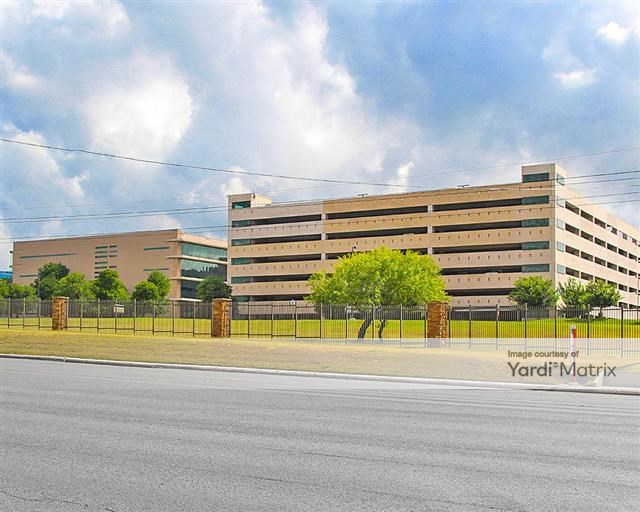
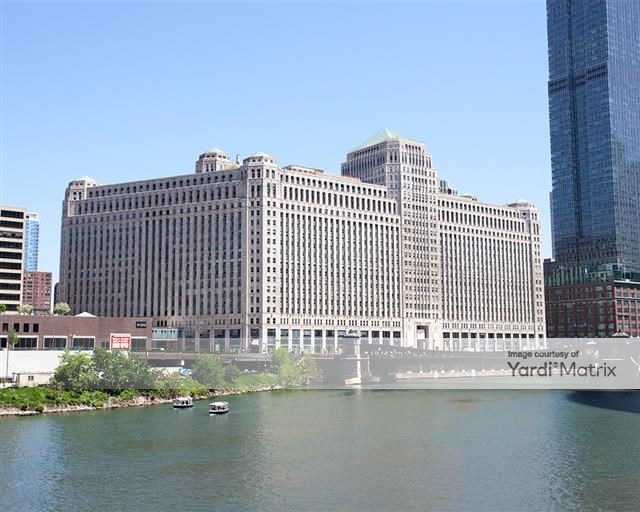
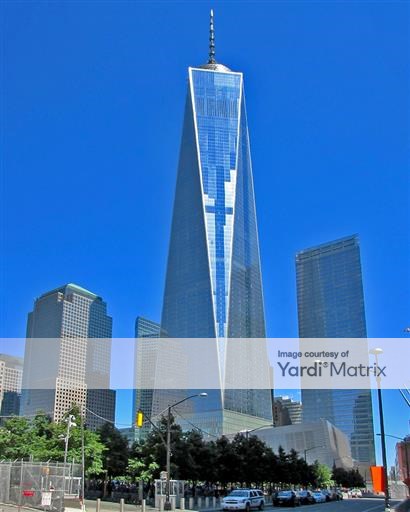
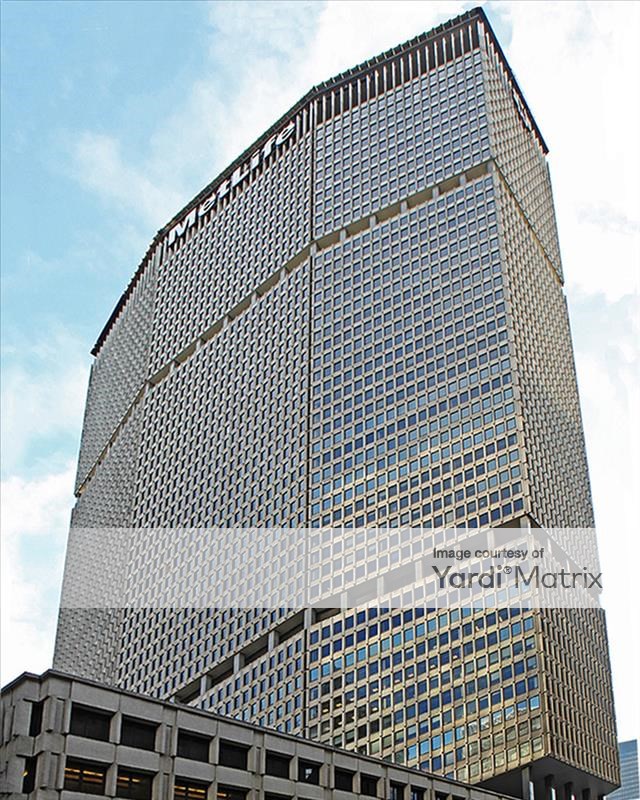
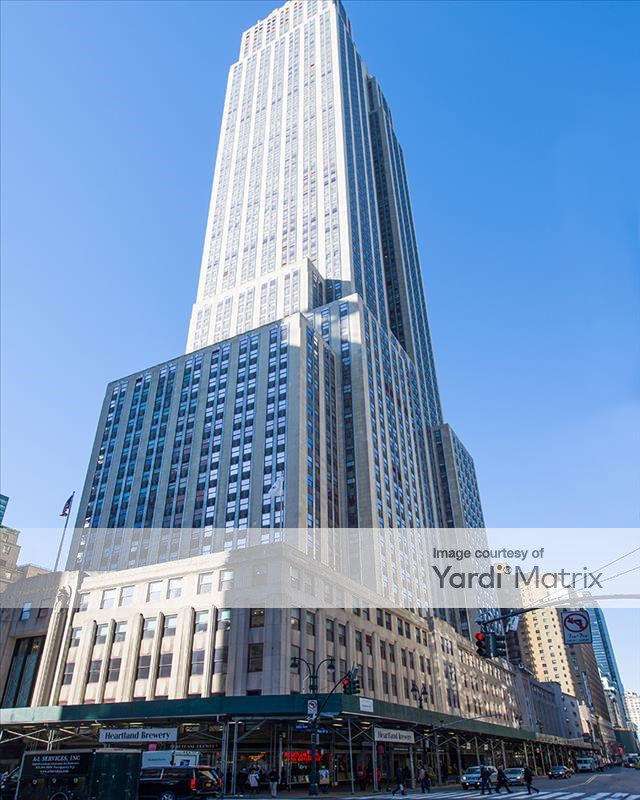
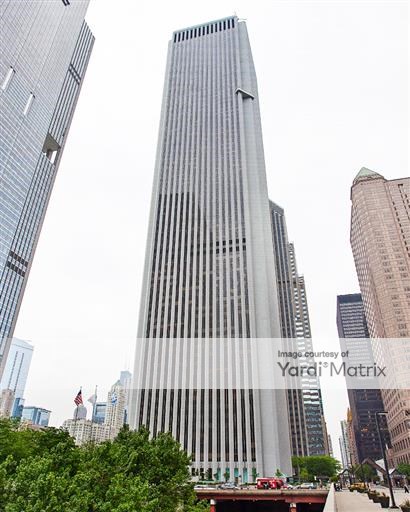
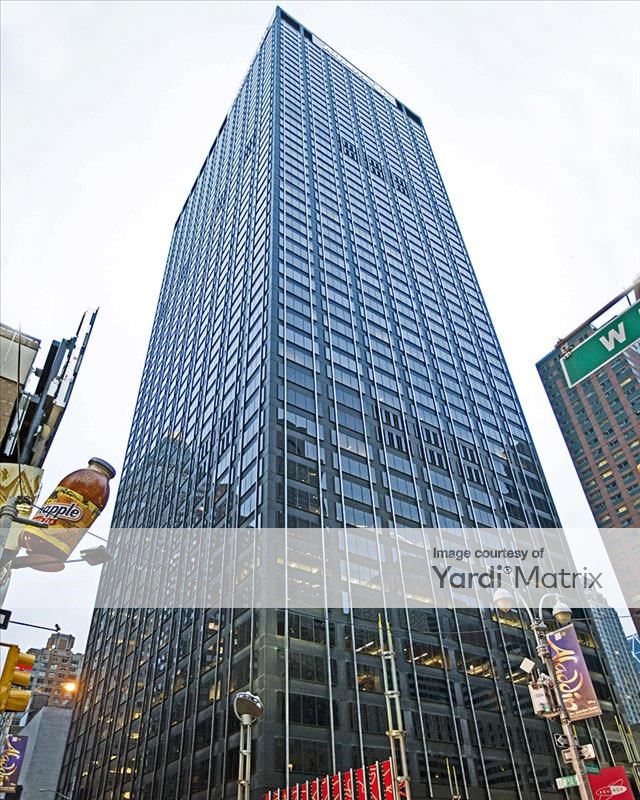
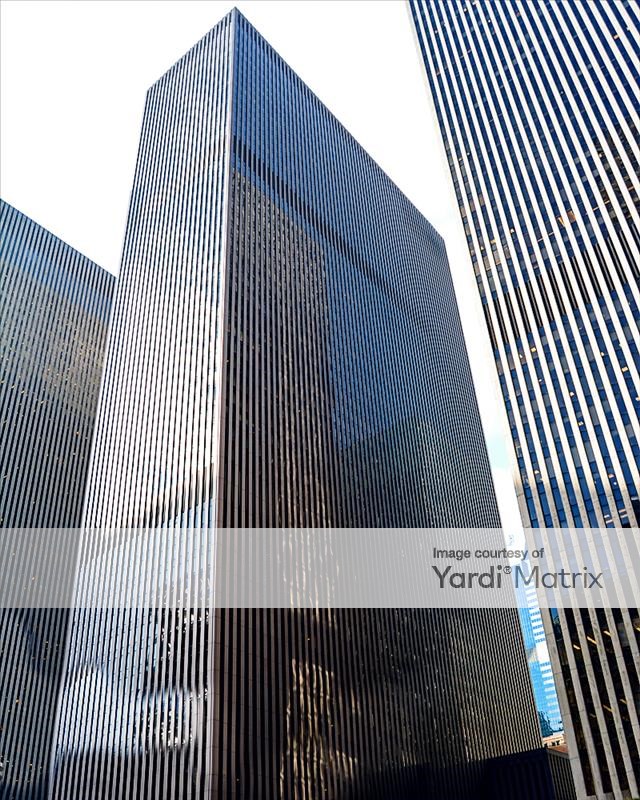
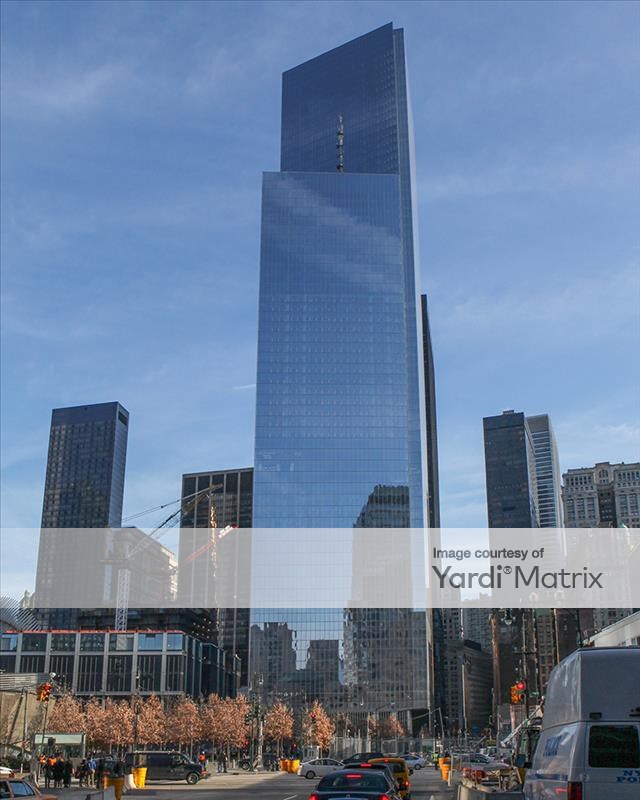






You must be logged in to post a comment.